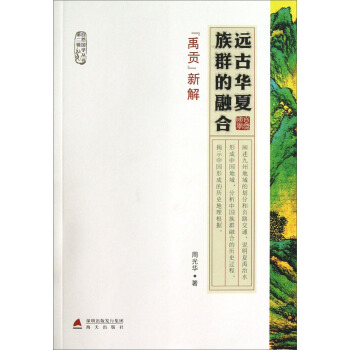

具体描述
内容简介
《禹贡》是夏朝前后时期的地理交通、生态物产民俗资源古籍,是中国族群国家形成的凭据,至今占据着无法替代的证据地位,《远古华夏族群的融合:<禹贡>新解》旨在介绍《禹贡》文献的价值作用,传播中国地域族群的传统。作者简介
周光华,1946年生。山东淄博市社会科学联合会研究员。出版著作《(山海经)探华夏源》《远古的华夏族》。副主编史志一部,发表论文30余篇。目录
前言
第一章 《尚书·禹贡》简说
一、《尚书》
二、《禹贡》
三、《禹贡》研究
第二章 司马迁采录《禹贡》所作的改动
一、《史记》明确夏禹治水“自冀州始”
二、《史记》误写“鸟夷皮服”
三、《史记》增加和强调“道九山”
四、《史记》增加和强调“道九川”
五、《史记》强调周王朝封侯体制
第三章 《禹贡》记载的九州以及贡路交通
一、《禹贡》九州
(一)冀州
(二)兖州
(三)青州
(四)徐州
(五)扬州
(六)荆州
(七)豫州
(八)梁州
(九)雍州
二、九州的贡路交通
(一)冀州贡路交通
(二)兖州贡路交通
(三)青州贡路交通
(四)徐州贡路交通
(五)扬州贡路交通
(六)荆州贡路交通
(七)豫州贡路交通
(八)梁州贡路交通
(九)雍州贡路交通
第四章 《禹贡》记载疏通的黄河、淮河、长江
一、疏通的黄河河道
二、疏通的淮河水系河道
三、疏通的长江水系河道
四、“四渎”疏通的成效
第五章 《禹贡》时期的物产与生态环境
一、物产
(一)冀州、兖州、青州、徐州、扬州物产,盐贡,
产象和犀牛的地方
(二)荆州、豫州物产、产象和犀牛的地方
(三)梁州、雍州物产、铁器的起源
二、生态环境条件
第六章 《禹贡》记载的族群
一、《禹贡》记载的东夷族群与首领蚩尤
(一)古籍记载蚩尤称号炎帝
(二)蚩尤族群在山西河北山东地面生存发展
(三)蚩尤与黄帝大战失败后南迁
(四)苗、瑶族是炎帝蚩尤后裔的山东土著东夷族群
(五)《禹贡》记载的“淮夷”
二、《禹贡》记载的西羌族群
(一)《禹贡》记载的羌族群
(二)蚩尤族群的西迁后裔与羌戎族群变迁
第七章 《禹贡》与夏王朝
一、夏族群
二、夏禹治水及夏族始于古都邑晋南
三、从夏朝都城的迁徙趋向看华夏大融合
(一)阳翟是舜赐予夏禹的封地
(二)夏禹治水族群东移
(三)夏朝都城往东迁徙
(四)夏族的余脉迁徙山东
第八章 结束语
一、中国地域族群是古老的
二、神农和炎帝不是同时代的人
(一)神农炎帝不同代
(二)神农氏的由来
(三)神农氏时期
(四)神农炎帝南展
三、华夏族群的形成
(一)华夏族群
(二)华夏族群的形成
四、对《禹贡》的说明
五、对黄帝及其族群的简述
(一)古籍记载的黄帝来源
(二)黄帝生于甘肃天水轩辕丘
(三)河南新郑不是黄帝族群源生地
六、“狄”族群
七、远古北方族群
八、南方楚越及西南夷
九、炎黄时代的年表
参考文献
索引
前言/序言
用户评价
《远古华夏族群的融合:《禹贡》新解》——仅仅是书名就足以勾起我无限的遐想。我对中国古代历史,尤其是早期文明的起源,一直有着极大的热情。《禹贡》作为中国古代文献中的瑰宝,其记载的内容极为丰富,但同时也充满了许多待解的谜团。长期以来,学界对《禹贡》的解读可谓是百家争鸣,而“新解”二字,则预示着本书可能带来了全新的视角和研究方法,这让我倍感期待。更让我着迷的是“远古华夏族群的融合”这个副标题。我一直对“华夏”这个概念的形成过程充满好奇。在遥远的古代,分散在黄河、长江流域及更广阔地域的众多部族,是如何在交流、碰撞、融合中,逐渐走向统一,形成我们今天所称的中华民族的?这本书是否能够通过对《禹贡》中关于地理、物产、甚至神话传说等内容的细致剖析,来揭示不同族群的分布、迁徙和相互关系?我非常渴望了解作者是如何将《禹贡》这部文献与早期族群融合的历史进程联系起来的。我期待作者能够运用扎实的史料和严谨的逻辑,为我描绘出一幅生动而又深刻的远古族群融合图景。这本书是否会探讨早期国家形态的萌芽,或者不同文化元素的交融汇聚?这些问题都让我对本书充满了探索的欲望。我希望这本书能带领我穿越历史的迷雾,去感受那个波澜壮阔的时代,去理解我们民族是如何一步步走向统一和繁荣的。
评分When I encountered the title 《远古华夏族群的融合:《禹贡》新解》, my immediate thought was, "Finally, a book that might tackle a truly foundational question in Chinese history with a fresh perspective." The Yu Gong (《禹贡》) has always been one of those texts that scholars pore over, trying to decipher its ancient geographical terms and its implications for early political organization. However, the aspect that truly captivates me is the subtitle: "The Integration of Ancient Huaxia Ethnic Groups." This speaks to the very essence of Chinese identity – how did a diverse set of peoples, likely with distinct languages, customs, and social structures, come to be recognized as "Huaxia"? The promise of a "new interpretation" of the Yu Gong suggests that this book might offer novel insights, perhaps by integrating recent archaeological discoveries or employing a more nuanced theoretical framework to understand the complex social dynamics of that remote past. I am particularly interested in how the author will bridge the gap between the seemingly objective descriptions of geography and tribute in the Yu Gong and the lived experiences of the various ethnic groups inhabiting those regions. Will the book explore the nature of their interactions – were they primarily cooperative, competitive, or a mixture of both? How did cultural exchange, trade, and even conflict contribute to the gradual process of integration? I’m hoping for a work that doesn't just rehash old interpretations but actively reconstructs the historical processes, providing a compelling narrative of how diverse peoples began to forge a shared identity. The very idea of tracing the origins of our collective identity through the lens of such a significant ancient text is incredibly appealing, and I eagerly anticipate delving into its contents.
评分这本书的名字《远古华夏族群的融合:《禹贡》新解》光是看书名就让我充满了好奇。我一直对中国古代的历史和神话传说非常着迷,特别是那些关于早期文明起源的论述。像《禹贡》这样的古籍,虽然流传下来,但其中涉及的地理、民族、政治等内容,随着时间的流逝,很多细节都变得模糊不清,甚至充满了各种争议和解读。我一直很想找到一本能够深入浅出地解读这些古籍,并且能够将那些零散的传说和史料串联起来,形成一个完整清晰的历史画卷的书。这本书的标题里明确提到了“新解”,这让我看到了它不同于以往解读的潜力。我非常期待它能提供一些我从未接触过的视角,或者用现代的学术研究成果来重新审视这些古老的文本,从而揭示出一些隐藏在字里行间的历史真相。尤其是“远古华夏族群的融合”这个副标题,更是直击我内心深处对民族起源的探究欲望。我们是谁?我们的祖先是如何聚集在一起,形成我们今天所称的“华夏”的?这些都是非常宏大而又充满魅力的课题。《禹贡》作为一本重要的文献,很可能就蕴含着这些答案的线索。我希望这本书能够带领我走进那个遥远的时代,去感受先民们筚路蓝缕、开疆拓土的艰辛,去理解不同族群之间是如何在交流、碰撞、融合中,逐渐凝聚成一个强大的文明体。我甚至希望作者能通过对《禹贡》的细致解读,勾勒出一些早期政治制度、社会结构,甚至是思想文化的萌芽,让我对那个时代有一个更加立体的认识。总之,这本书的名字就像一把钥匙,让我迫不及待地想要打开历史的大门,去探索那些古老而又神秘的过往,去了解我们民族是如何一步步走到今天的。
评分The title 《远古华夏族群的融合:《禹贡》新解》 immediately piqued my interest, as it touches upon two subjects I find endlessly fascinating: the early development of Chinese civilization and the interpretation of ancient texts. The Yu Gong (《禹贡》) has always been a text of great significance, a cornerstone for understanding ancient Chinese geography and administration, yet its interpretations have been a subject of scholarly debate for centuries. The prospect of a "new interpretation" is always welcome, as it suggests the possibility of uncovering previously overlooked nuances or applying modern analytical tools to unlock its secrets. However, it is the subtitle, "The Integration of Ancient Huaxia Ethnic Groups," that truly draws me in. The question of how disparate tribes and peoples gradually coalesced into the unified entity we now call the Huaxia civilization is fundamental to understanding Chinese history and identity. I am eager to see how this book will connect the geographical and political information presented in the Yu Gong to the complex processes of ethnic interaction, migration, and assimilation that characterized ancient China. Will the author delve into the specific tribal groups mentioned or implied in the text? Will they explore the mechanisms of integration, such as trade, intermarriage, or political alliances? I am particularly curious about how the book will address the challenges of defining "Huaxia" in such an early period and how different groups contributed to its formation. The title suggests a scholarly yet accessible approach, and I am keen to explore the arguments and evidence presented. I hope this book will provide a comprehensive and insightful exploration of this crucial period in China's past, offering a fresh perspective on the origins of its enduring civilization.
评分The title 《远古华夏族群的融合:《禹贡》新解》 immediately signals a deep dive into one of the most fundamental and intriguing periods of Chinese history. My fascination with the origins of Chinese civilization is long-standing, and the Yu Gong (《禹贡》) has always been a text that both fascinates and mystifies. Its detailed descriptions of the land, its resources, and its administrative divisions offer a rare window into the ancient world, but its true meaning, particularly concerning the peoples who inhabited those regions, remains a subject of ongoing scholarly debate. The phrase "new interpretation" is key here – it implies a departure from established scholarly consensus, a potential for fresh insights that could reshape our understanding of this pivotal era. The subtitle, "The Integration of Ancient Huaxia Ethnic Groups," speaks directly to my core interest: the very process by which the diverse peoples of ancient China began to coalesce into a recognizable cultural and political entity. I am particularly keen to see how the author uses the Yu Gong as a primary source to explore this complex dynamic. Will the book analyze the geographical boundaries and tribute systems described in the text to infer patterns of interaction, trade, and perhaps even conflict between different groups? I am curious to learn if the author will connect these textual clues with archaeological evidence or linguistic studies to build a robust argument about ethnic integration. The term "Huaxia" itself is loaded with historical significance, and I anticipate this book will grapple with its early formation, exploring how shared experiences, cultural exchanges, and possibly political pressures led to the gradual weaving together of various tribal identities. It’s the kind of book that promises to be both intellectually rigorous and historically expansive, offering a chance to understand the bedrock upon which Chinese civilization was built.
评分读到《远古华夏族群的融合:《禹贡》新解》这个书名,我的脑海里立刻浮现出一种宏大的历史画卷,充满了神秘和探索的吸引力。作为一个对中国古代史,尤其是夏商周时期充满兴趣的读者,我对《禹贡》这本书的解读一直有着浓厚的兴趣。《禹贡》作为中国古代最重要的地理学著作之一,其中记录了大量的山川河流、九州方域的划分,甚至还涉及到了当时的物产和贡赋制度。然而,随着历史的变迁,这些古老的地理信息往往变得模糊不清,解读起来也充满了挑战。更不用说其中蕴含的关于早期族群分布和交流的信息了,那更是需要极高的智慧和深厚的学养才能洞悉。这本书的标题中“远古华夏族群的融合”这个关键词,直接点出了我最关注的方面——我们民族的起源和发展。我一直好奇,在那个蛮荒的时代,不同的部落、不同的族群是如何相互认识、相互接触,并最终融合在一起,形成了今天我们所熟知的“华夏”文明。这本书 promette (承诺) 能够通过对《禹贡》的“新解”来揭示这些答案,这让我感到非常激动。我期望作者能够运用最新的考古发现、历史文献研究成果,甚至结合人类学、民族学的视角,来为我们呈现一个更加科学、更加生动的远古族群融合图景。我想知道,在《禹贡》所描绘的九州之地,究竟生活着哪些族群?他们之间是如何进行交流和贸易的?在冲突与合作中,他们又是如何逐渐形成共同的文化认同和民族意识的?这本书会不会也触及到早期国家的形成、政治制度的演变,甚至是神话传说背后所折射出的族群记忆?种种疑问在我心中盘旋,这本书无疑成为了我近期最期待的阅读对象。
评分Looking at the title 《远古华夏族群的融合:《禹贡》新解》, my initial reaction is one of intellectual curiosity mixed with a deep respect for the subject matter. The Yu Gong (《禹贡》) is one of those ancient texts that feels both immensely important and incredibly difficult to fully grasp in its original context. We know it deals with geographical divisions and resource management, but the layers of meaning regarding the peoples who inhabited these lands and their interactions are often obscured by time. The promise of a “new interpretation” suggests a re-examination, perhaps with new methodologies or by cross-referencing with recent archaeological findings, which is always an exciting prospect for anyone interested in ancient history. The phrase "Integration of Ancient Huaxia Ethnic Groups" is the real hook. This is the grand narrative of origins, the story of how a multifaceted landscape of peoples, with their diverse customs and languages, began to forge a common identity. I’m eager to learn how this book aims to illuminate this complex process through the specific lens of the Yu Gong. Will it analyze the names of regions, the types of tribute, or the descriptions of local products to infer the presence and relationships of different groups? I am particularly interested in how the author will navigate the inherent challenges of defining "ethnic groups" in such a remote past. Will the book propose specific models for understanding this integration, perhaps a gradual process of assimilation, or more forceful political unification? I’m hoping for a scholarly work that meticulously dissects the Yu Gong, extracting its subtle clues and weaving them into a coherent and compelling narrative about the foundational stages of Chinese civilization. It feels like a journey into the very heart of who we are, tracing our roots back to a time when the concept of "Huaxia" was perhaps only beginning to take shape.
评分《远古华夏族群的融合:《禹贡》新解》——这个书名本身就带着一种厚重的历史感和令人振奋的研究气息。我一直对《禹贡》这本古籍情有独钟,但同时也深感其解读的复杂性。《禹贡》中所描绘的九州疆域、山川形胜,对于我们现代人来说,很多地名已经难以考证,更不用说其中暗含的族群分布和相互关系了。因此,一本能够对《禹贡》进行“新解”的书,对我来说具有极大的吸引力。特别是“远古华夏族群的融合”这一副标题,更是直接触及了中国文明起源的核心问题。我一直对“华夏”这个概念的形成过程非常感兴趣,想知道在漫长的历史长河中,那些散落在广袤土地上的不同部族,是如何在交流、碰撞、融合中,最终汇聚成我们今天所说的中华民族的。这本书是否会通过对《禹贡》中那些关于物产、贡赋、甚至是神话传说的分析,来揭示不同族群的分布、迁徙以及他们之间相互影响的轨迹?我非常期待作者能够运用扎实的史料和严谨的逻辑,为我们描绘出一幅生动而又深刻的远古族群融合图景。这本书会不会也尝试去梳理一下,在《禹贡》所记载的时代,是否存在一些初步的政治联合和文化认同的迹象?那些关于大禹治水的故事,是否也蕴含着不同族群协作共赢的历史信息?对于我来说,这不仅仅是关于一个古老文献的解读,更是一次深入探寻中华文明基因的旅程。我希望这本书能够带我穿越时空,去感受那个充满活力和创造力的远古时代,去理解我们的祖先是如何一步步奠定中华文明的基石。
评分When I first saw the title《远古华夏族群的融合:《禹贡》新解》, my mind immediately conjured up images of ancient landscapes and the slow, complex process of civilization building. As someone fascinated by the deep roots of Chinese culture and the formation of its early identities, the prospect of a new interpretation of the Yu Gong (《禹贡》) is incredibly exciting. The Yu Gong itself is a text shrouded in layers of history and academic debate; its descriptions of geographical regions, tribute systems, and natural resources offer tantalizing glimpses into the ancient past, but often leave modern readers with more questions than answers. The promise of a “new interpretation” suggests that this book will go beyond established readings, perhaps utilizing fresh perspectives or the latest archaeological evidence to shed light on its enigmatic content. What truly captures my imagination, however, is the subtitle: "The Integration of Ancient Huaxia Ethnic Groups." This is the core of my interest – understanding how the diverse peoples who inhabited the Yellow River and Yangtze River basins, and beyond, came to coalesce into what we now recognize as the Huaxia civilization. I am eager to discover how this book might connect the geographical and administrative details of the Yu Gong to the intricate social and political dynamics of early tribal interactions. Will it explore patterns of migration, trade, and conflict? Will it offer insights into the development of shared cultural practices, beliefs, or even early forms of governance that facilitated this process of integration? The very idea of piecing together the mosaic of early Chinese society through the lens of this foundational text is a compelling intellectual adventure. I anticipate a work that is both rigorously academic and compellingly narrative, guiding me through the mists of prehistory to a clearer understanding of our collective origins.
评分《远古华夏族群的融合:《禹贡》新解》——这个书名让我眼前一亮,瞬间激发了我深入探究的兴趣。我一直对中国古代文明的起源非常着迷,特别是关于早期族群的分布、互动和融合,这些都是构建我们民族认同感的重要基石。《禹贡》作为一部古老而重要的文献,其中记载了大量的地理信息、物产分布以及当时的政治制度雏形,然而,历代以来对其的解读都存在着不少争议。因此,一本声称能提供“新解”的书,对我来说具有极大的吸引力。而“远古华夏族群的融合”这个副标题,则直接点燃了我探索的激情。我迫切地想知道,在那个蒙昧初开的时代,不同的部族是如何在地理环境的塑造、生存资源的争夺、以及文化交流的推动下,逐渐走向融合,最终形成所谓的“华夏”文明的。这本书是否会运用跨学科的研究方法,比如结合考古发现、人类学理论,甚至语言学上的证据,来为我们解析《禹贡》中那些看似模糊的地名、物产和贡赋制度背后所蕴含的族群信息?我期待作者能够提供一些我从未设想过的观点,或者通过精妙的论证,将那些零散的史料碎片巧妙地拼接起来,描绘出一幅清晰可辨的远古族群融合的画卷。这本书是否会涉及到早期国家的形成,以及不同文化观念如何相互影响和渗透?这些都是我非常感兴趣的方面。总而言之,这本书的名字预示着一场深入历史肌理的探索,我对此充满期待,渴望从中获得关于我们民族起源的全新认识。
相关图书
本站所有内容均为互联网搜索引擎提供的公开搜索信息,本站不存储任何数据与内容,任何内容与数据均与本站无关,如有需要请联系相关搜索引擎包括但不限于百度,google,bing,sogou 等,本站所有链接都为正版商品购买链接。
© 2025 windowsfront.com All Rights Reserved. 静流书站 版权所有

![教育部哲学社会科学研究重大课题攻关项目:西方文论中国化与中国文论建设 [Sinicization of Western Literary theory and Construction of Chinese Literary Theory] pdf epub mobi 电子书 下载](https://pic.windowsfront.com/11220453/rBEQWVF1CdAIAAAAAAhBeSh36S8AAEs9QHixfsACEGR366.jpg)

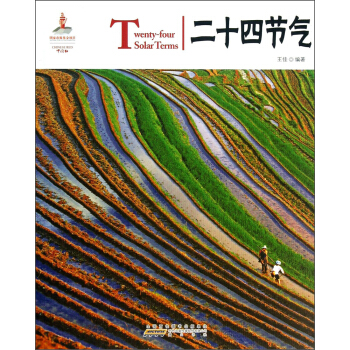

![南方传媒蓝皮书:广东文化产业发展战略研究 [Development Strategies of the Cultural Industry in Guangdong] pdf epub mobi 电子书 下载](https://pic.windowsfront.com/11332024/rBEhUlJnZPwIAAAAAAnp4vrBp1wAAEexQAjM5wACen6294.jpg)


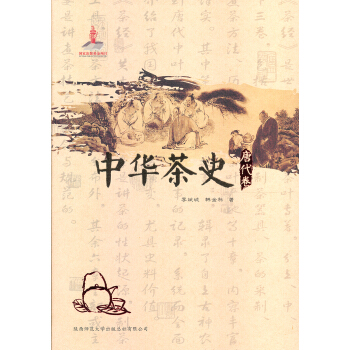
![山西历史文化读本 [The History And Culture of Shanxl: A Reader] pdf epub mobi 电子书 下载](https://pic.windowsfront.com/11428523/rBEhVFM04UwIAAAAAAGeObFy7NwAAK1uwPCLX8AAZ5R641.jpg)
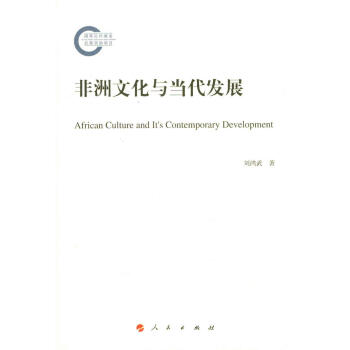
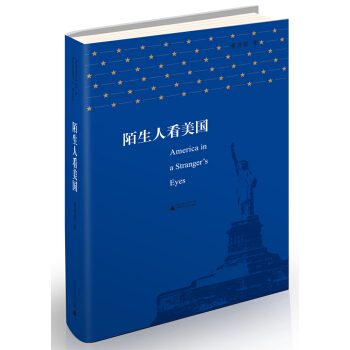

![中国文化双语用书:中国文化概论(汉英对照) [Introduction to Chinese Culture] pdf epub mobi 电子书 下载](https://pic.windowsfront.com/11558791/544e0a21Nbcd23419.jpg)
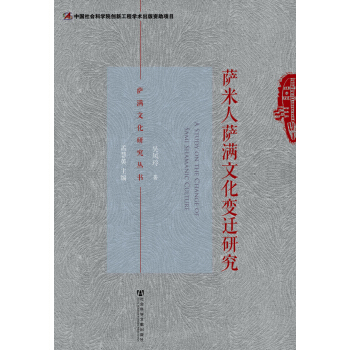
![上海市国家级非物质文化遗产名录项目丛书:滑稽戏 [Comic Drama] pdf epub mobi 电子书 下载](https://pic.windowsfront.com/11595275/54cf4795N9e44c4fa.jpg)
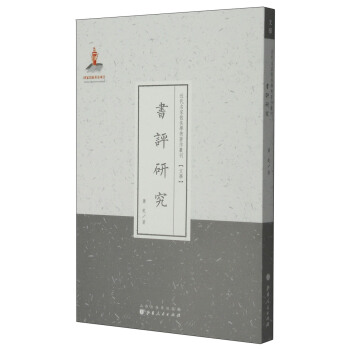
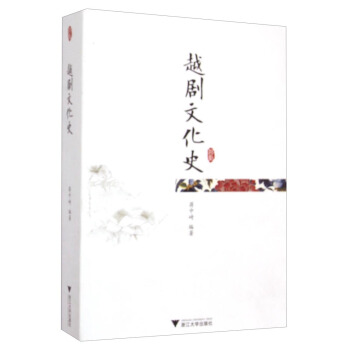
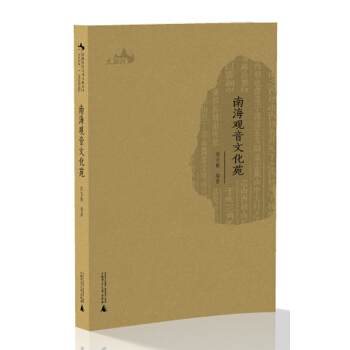
![中国红:中国饮食 [Chinese Food] pdf epub mobi 电子书 下载](https://pic.windowsfront.com/11625967/55189fefN405b2a84.jpg)
![中国红:景泰蓝 [Cloisonne] pdf epub mobi 电子书 下载](https://pic.windowsfront.com/11625969/55189fefNf8a2c3ab.jpg)